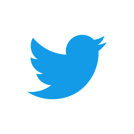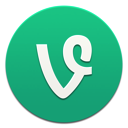Custom Digital Marketing, Social & Interactive Media Consulting
People like to see ‘behind-the-curtain’ ... Sometimes you get biggest response from some of the crazier things you post

What is Twitter?
Twitter is an online social networking service and microblogging service that enables its users to send and read text-based "tweets" (messages of up to 140 characters). Users 'follow' accounts to receive the latest stories, ideas, opinions and news about what they find interesting. Unregistered users can read tweets, while registered users can post tweets through the website interface (twitter.com), SMS, or a range of apps for mobile devices. Since its release to the public in July 2006, Twitter has become one of the ten most visited websites on the Internet.
Definition in part from Twitter and Wikipedia
Positive Points:
- Real-time updates, providing unparalleled behind-the-scenes access
- Keeps 'brand enthusiasts' (fans) active through engagement, deepening the fan relationship
- Personal, conversational
- Free to sign up and use
- 55% follow a brand on Twitter because they like the brand
- 140-character format, along with multiple smartphone apps, lends itself well to mobile use - opening up the potential for on-location (and on-the-go) posting
- 52% follow a brand on Twitter to be notified of special offers/promotions
- Self-identification -- fans choose to follow or like their favorite people and/or organizations, voluntarily identifying themselves as 'fans'
Potential Pitfalls:
- The immediacy and availability of Twitter raises the risk of tweeting something you shouldn't have
- People don't always think before they tweet, say something in the heat of the moment, only to regret it later
- TMI syndrome - companies run the risk of employees sharing confidential information, trade secrets, intellectual property
- Behind every tweet is a human, and mistakes can happen
- Organizations can find themselves in the crosshairs for tweeting the wrong thing

What is Vine?
Founded in June 2012, Vine is a short-form video sharing service. Vine users can record, edit and post six-second long looping video clips. Users can share video clips via Vine’s social network/site as well as on Facebook and Twitter.
In the same vein as retweet on Twitter (which bought Vine in October 2012), users can revine clips – share other people’s posts with followers. Based on what is popular and trending, some Vines are revined automatically.
Users can also browse video clips shared by others on Vine, browse video clips grouped by a particular theme and trending videos.
Definition in part from Vine and Wikipedia
Positive Points:
- Real-time updates, providing unparalleled behind-the-scenes access
- Keeps 'brand enthusiasts' (fans) active through engagement, deepening the fan relationship
- Videos will be 55% of all internet traffic by 2016
- Free to sign up and use
- Branded Vines receive 400% more shares than traditional branded videos
- 64% of consumers are likely to buy a product after watching a related online video
- Six second format, along with smartphone app, lends itself well to mobile use - opening up the potential for on-location (and on-the-go) posting
- Self-identification -- fans choose to follow or like their favorite people and/or organizations, voluntarily identifying themselves as 'fans'
Potential Pitfalls:
- The immediacy of Vine raises the risk of posting/revining something you shouldn't have
- People don't always think before they post, shoot a video in the heat of the moment, only to regret it later
- TMI syndrome - companies run the risk of employees sharing confidential information, trade secrets, intellectual property
- Behind every video is a human, and mistakes can happen
- Organizations can find themselves in the crosshairs for posting the wrong thing
- Largest age group among Vine users is 18-20 years old